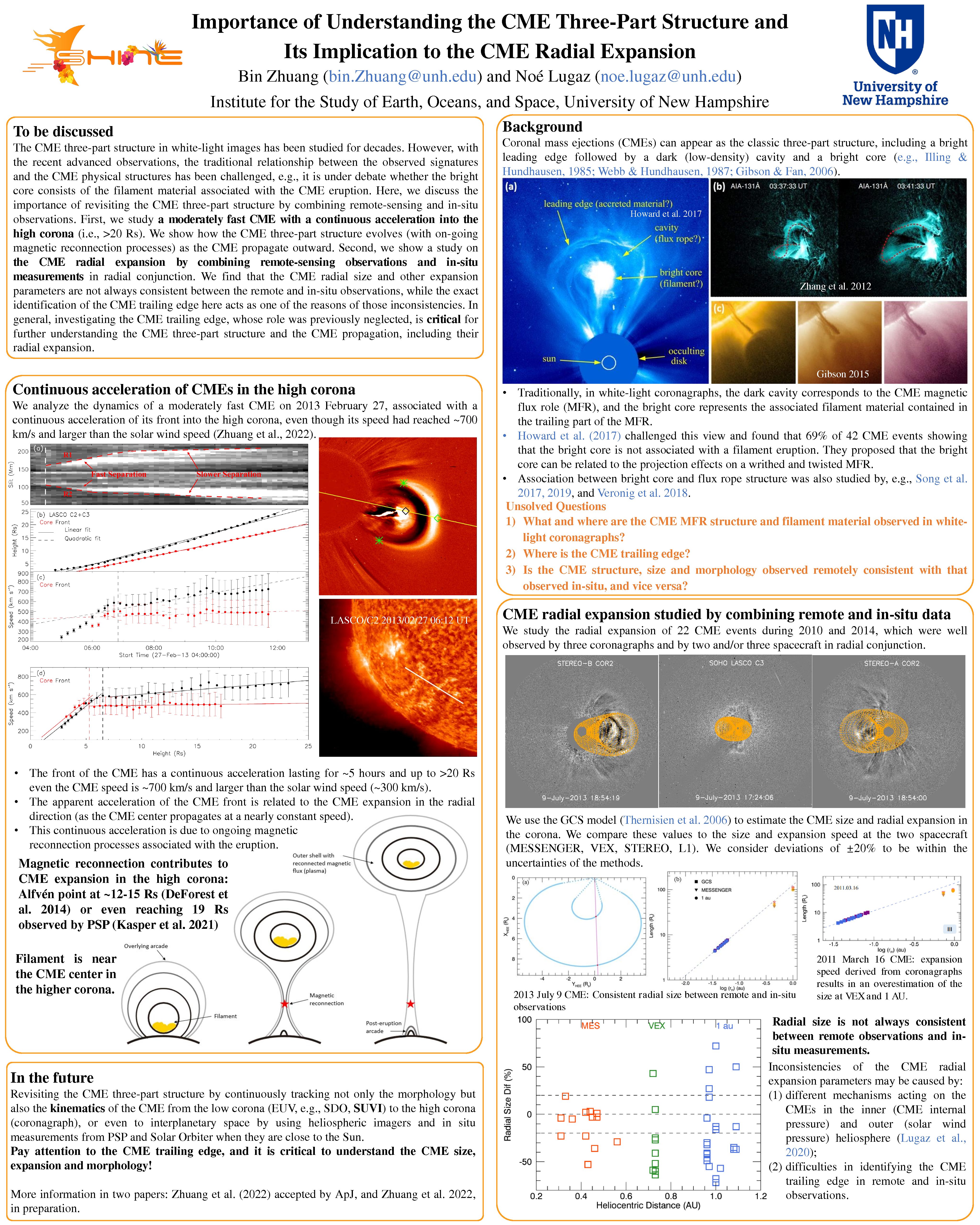Authors: Bin Zhuang (University of New Hampshire), Noé Lugaz (University of New Hampshire)
The CME three-part structure in white-light images has been studied for decades. However, with the recent advanced observations, the traditional relationship between the observed signatures and the CME physical structures has been challenged, e.g., it is under debate whether the bright core consists of the filament material associated with the CME eruption. Here we discuss the importance of revisiting the CME three-part structure combining remote-sensing and in-situ observations. We start from a mediately fast CME event showing a continuous acceleration to the high corona (i.e., >20 Rs) with a speed higher than the solar wind speed. We show the corresponding kinematics of the CME exact structure counterparts and discuss how the CME three-part structure evolves (with ongoing magnetic reconnection processes) as the CME propagates outward, especially to a large distance. We then show a study on the CME radial expansion by combining remote-sensing observations and in-situ measurements in radial conjunction. We find that the CME radial size and other expansion parameters are not always consistent between the remote and in-situ observations, while the exact identification of the CME trailing edge here acts as one of the reasons for those inconsistencies. In general, investigating the CME trailing edge, whose role was previously neglected, is important for further understanding the CME three-part structure and the CME propagation (e.g., the radial expansion). We finally discuss further combining the recently launched missions, e.g., the Parker Solar Probe, GOES/SUVI, and Solar Orbiter, for the exact CME-structure research.


